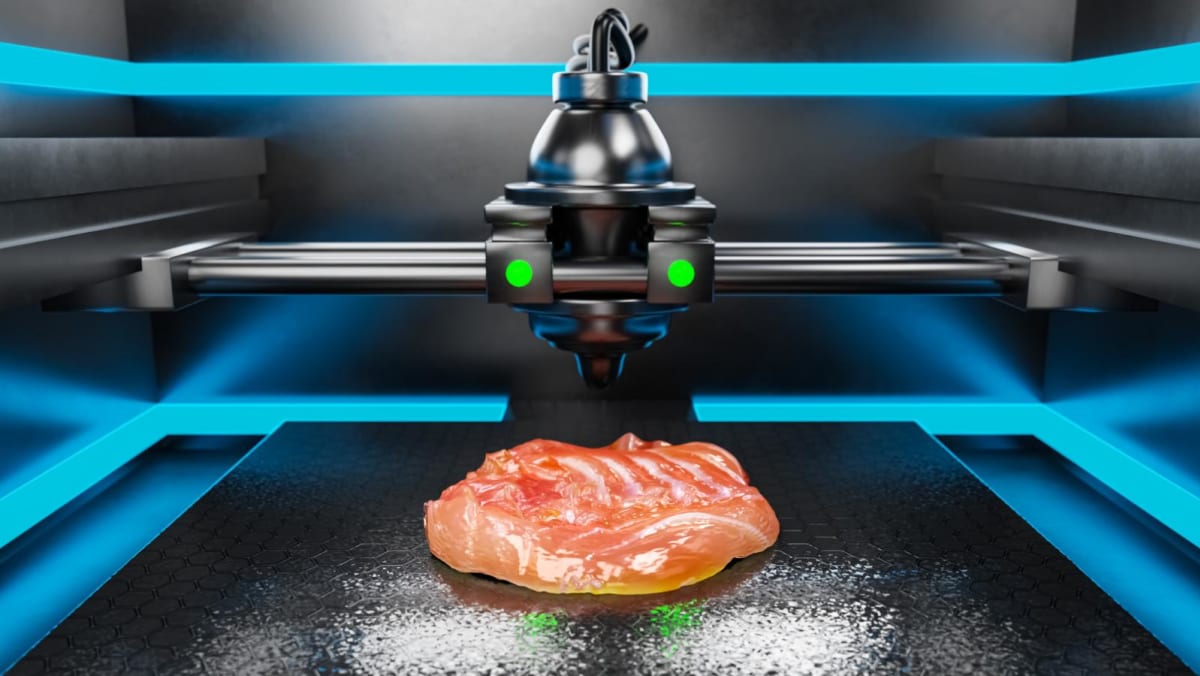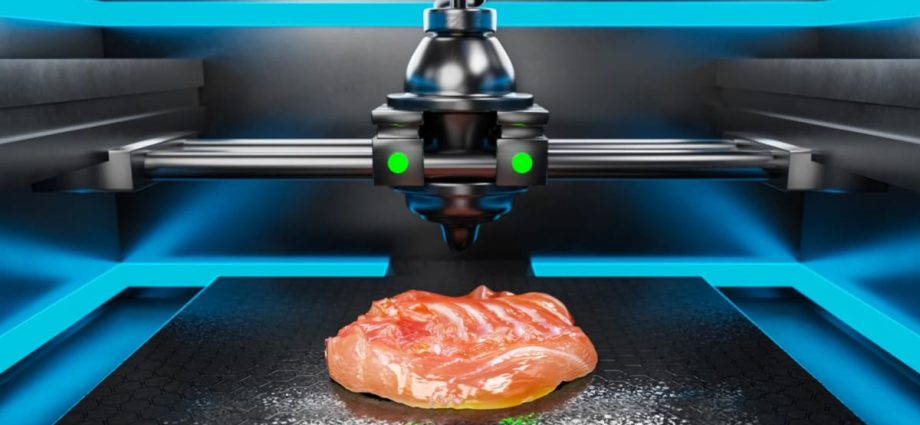
As for the poultry industry, you could say Yip “cried fowl” on its heavy reliance on antibiotics to promote growth and prevent diseases, “which contribute to the rise of antibiotic-resistant bacteria that may pose health risks to consumers”.
Furthermore, COVID-19 and the ripple effects of the Ukraine war have emphasised the importance of self-reliance globally. In Singapore, the government, along with key industry and community stakeholders, have been gearing up to meet the “30 by 30” goal of sustainably meeting 30 per cent of our nutritional needs by 2030.
With just 1 per cent of the country’s land set aside for farming, you won’t just be seeing high-tech urban farms and edible gardens in community gardens. There are also other food innovations that are starting to come into fruition, and become scalable and affordable to Singaporeans by 2040, said Tay.
3D-PRINTED PORK BELLY AND BACON
Other than the plant-based meat alternatives that you already see in supermarkets and on menus, there is also cultured meat created using animal cells. Yip predicted that such lab-grown cultured meat will likely gain wider acceptance by 2040 as the technology matures and becomes more affordable.
“By then, the technology can potentially evolve to a point where consumers can order meat products tailored to their preferences, dietary needs, and cultural preferences,” he said.

